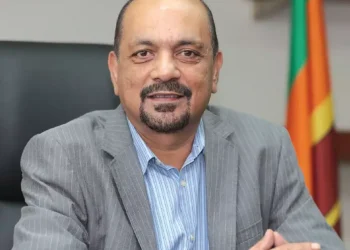Despite 2020 being a year of many challenges with lockdowns following the COVID-19 outbreak, the Bank of Ceylon has stamped its resilient leadership position by recording the highest industry profit in 2020.

The Bank’s operating profit for 2020 was 29 billion rupees. Profit before Tax was 23.6 billion rupees, and Profit after Tax was 17.8 billion rupees. The asset base grew by 24 percent to 2.9 trillion rupees, primarily backed by an increase of 28 percent in the loan book. Crossing two trillion rupees in its loan book was another milestone. Government and private sector lending contributed to growth during the year, while working capital and personal lending showed a boost in all segments, including retail and corporate financing.
Kanchana Ratwatte, Chairman, Bank of Ceylon, said, “The year 2020 was a challenging year amidst the pandemic, but we stood up to the challenges and the demands and came up with new ideas to serve the masses. The figures that we have released today show that we are the undisputed leader in the industry. We reached the landmark asset declaration of one trillion rupees in 2012, which we have increased to three trillion rupees as of present.”
“The Bank of Ceylon continued its leadership position throughout 2020. We had a triple achievement of 24 percent in asset growth, 28 percent increase in loans and advances, and 23 percent in deposit growth. As a State bank, Bank of Ceylon had to assist the Government’s efforts to sustain the economy amidst the challenging pandemic hit environment. Hence, we ensured that selected branches remained open throughout the lockdown phases for essential banking activities. The Corporate Branch, Trade Services and Treasury were operating throughout without full closure on a single day,”said D P K Gunasekera, GM, BOC.
Russel Fonseka, CFO, said, “BOC’s long-term development and sustainable operations ensured that we were able to function as normally as possible in 2020. At the end of the first quarter of 2021, BOC has successfully increased its asset base above three trillion rupees.

We are grateful to our customers, stakeholders, our staff, and the Government for as- sisting us in this journey. This three trillion rupee is more than a number; it is more than just capital, it consists of assets that belong to the Bank spread throughout the country; it represents the entire economy of the country. The Bank’s benefits also trickled down to the SME sector and the large scale enterprises, which we believe is in line with the Government’s Vistas of Prosperity program. There has been a revival in the post-COVID period with the emergence of new entrepreneurs, while existing entrepreneurs have changed the way they did business. So as a Bank, we are ready to assist them on their new jour- ney. We will continue to work towards increasing our asset base further from its current lead.”


M R N Rohana Kumara, DGM – Recovery Provinces, said, “The Government and the CBSL had introduced several credit support schemes in the form of moratoriums for various sectors. Under these schemes, we have given the maximum concessions to all the affected parties. We established a fully fledged Business Revival Unit recently, which has reached out to underperforming and struggling entities to revive them. We have more than 40 large-scale businesses; up to now, we have rehabilitated nine of them with loan facilities of up to 25 million rupees, and we hope to deal with the rest of the businesses shortly. Our intervention is not only helping the revival of the economy. Still, it helps to protect employment in these businesses and create new and indirect job opportunities while protecting our customer base. We have extended easy, and tailor-made settlement plans to these underperforming businesses, thereby enabling them to repay their monthly dues.” Ruwan Kumara, DGM Finance and Planning, said, “In reaching our asset base of three trillion rupees, which was an increase of 24 percent, we were able to increase our credit portfolio by 28.3 percent. I believe this is the largest increase reported in recent history by any bank in the country. Bank of Ceylon achieved this milestone in its second quarter of 2020. We hope that the benefits would be reflected in the second quarter of 2021. BOC increased its investment portfolio by 26 percent because as our bottom line improved, we maintained our liquid assets at a substantial level, the benefits of which, we hope, will be reflected in the Bank’s 2021 performance.” Despite the pandemic, the Bank had an excess of dollars from foreign remittances and export conversions, said R M N Jeewantha, DGM, International Treasure and Investment. “In terms of dollar liquidity, the institutions that we used to borrow dollars from were reluctant to part with foreign currency during the pandemic. In the meantime, we also had been downgraded, while other countries had imposed restrictions on overseas money remittances. This caused us a few issues in terms of dollar liquidity because we accept many inward remittances. Still, BOC continues to have the biggest market share in terms of inward remittances, which was a massive 2.8 billion dollars’
worth in 2020, which is substantial in terms of the 7.1 billion dollars’ worth of remittances received by the country last year, which was a six percent increase. The BOC created this growth because we have maintained our market share of over 40 percent in inward remittances for the past five to six years. The BOC is holding the market share for the 1.3 billion dollars’ worth of inward remittances so far for 2021, and this has been possible because of the instant and efficient services provided by the Bank to our overseas employees to remit money; without a hassle.”
K E D Sumanasiri, Senior DGM – HR said, “This achievement was a result of our staff who have worked tirelessly and with the dedication to help uplift struggling businesses and to enable inward remittances from our migrant workers. We followed stipulated health guidelines, including sanitizing and the use of sanitizer and safety gear and devices, and thereby created a safe environment for our employees to work in.”





